Bangladesh - In search of Man-eater (Sunderbans forest reserve) (LARGE post)
I've been processing more of my photos and decided I'm ready to post another series. I want to thank everyone for their comments on my other threads, and I hope you enjoy this one as well.
The Sundarbans is the largest tidal mangrove forest in the world. It is located in the south of Bangladesh and in the Indian state of West Bengal. It is located on the delta of the Ganges, Brahmaputra and Meghna rivers, which flow into the Bay of Bengal. The larger part of the forest is in Bangladesh (approximately 62%), while the rest is in West Bengal. Both parts are listed by UNESCO as world heritage sites, Sundarbans National Park (India) and Sunderbans (Bangladesh).
The literal meaning of the word Sundarban is "beautiful forest" or "beautiful jungle" in the Bangla (Bengali) language. It is also thought that it could have been derived from Sundari, a tree that is abundant in the forest.
The forest is home to large amounts of wildlife, including 270 bird species, 120 species of commercially important fish, 42 species of mammals, including approximately 500 royal Bengal tigers (one of the largest single populations in the world) and 30,000 chitals (spotted deer).
While there are no permanent settlements in the Sunderbans forest reserve (they are illegal), approximately 500,000 people live in towns, villages and small settlements along the northern part of the forest (just on the Bangladeshi side). Many are fishermen, who are sometimes allowed into the Sunderbans or the Bay of Bengal for a few days at a time to catch fish.
The photo below shows my approximate route during the 4 days I spent on a boat in the Sunderbans. At the top of the image, it reads "To: Mongla & Khulna" Note that the left 1/3 of the image is actually India, while the right 2/3 is Bangladesh, this photo does not show the border
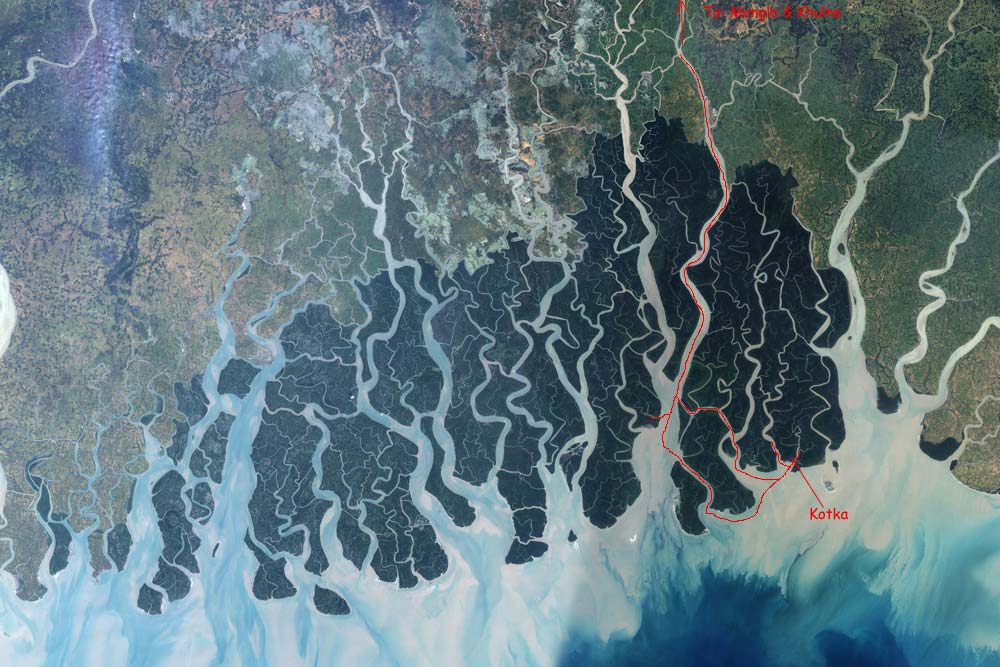
The following photos show life on the river and the settlements on the riverbanks. They are from an inhabited area around the Sunderbans, going south from Khulna, past Mongla and into the forest reserve.
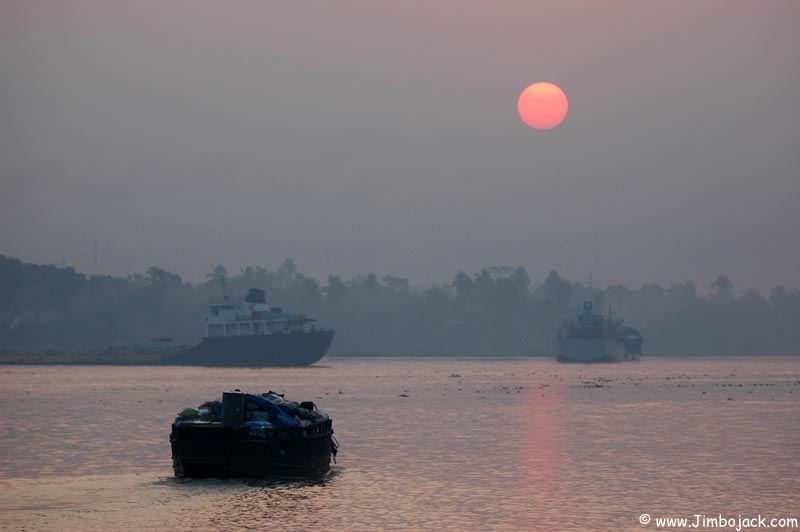

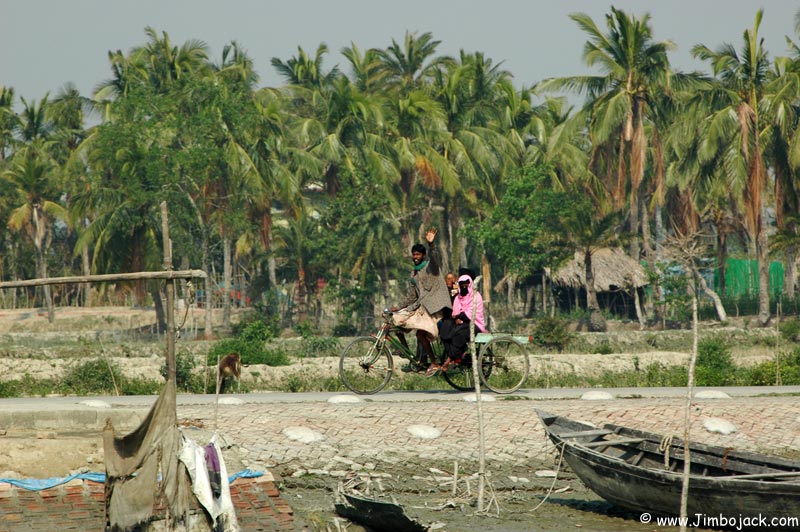
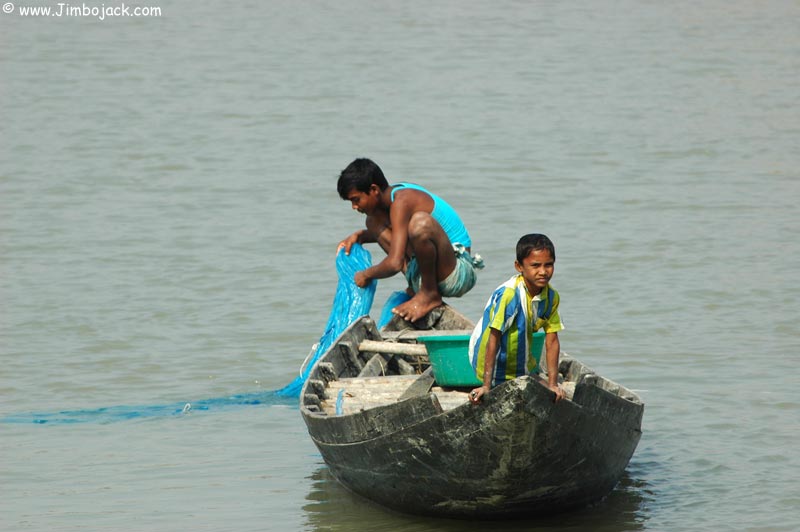
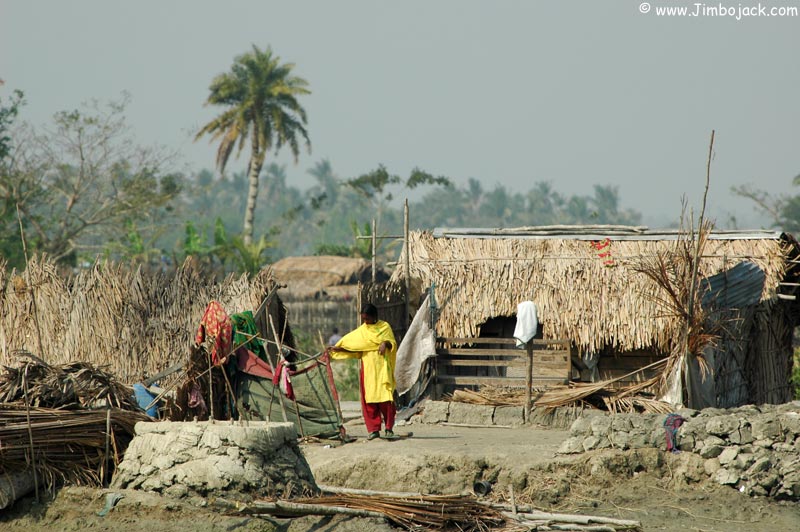
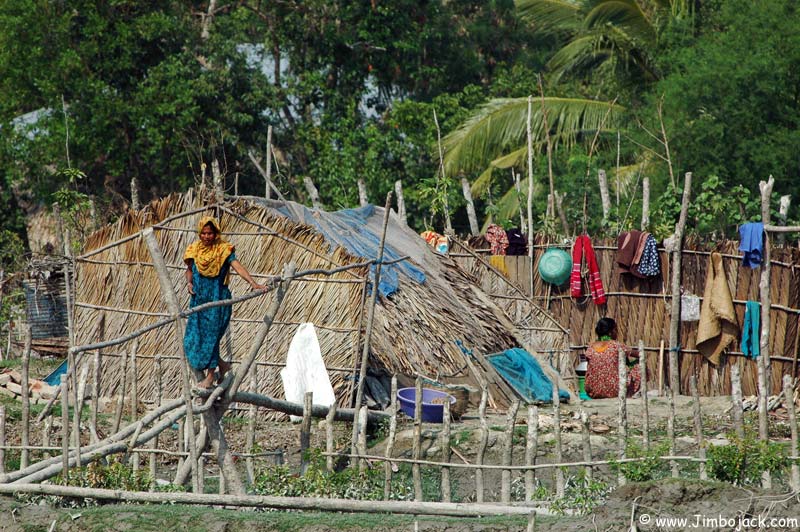
From this point on, photos are from the forest reserve where there are no settlements. It is completely wild
Sunrise over the river
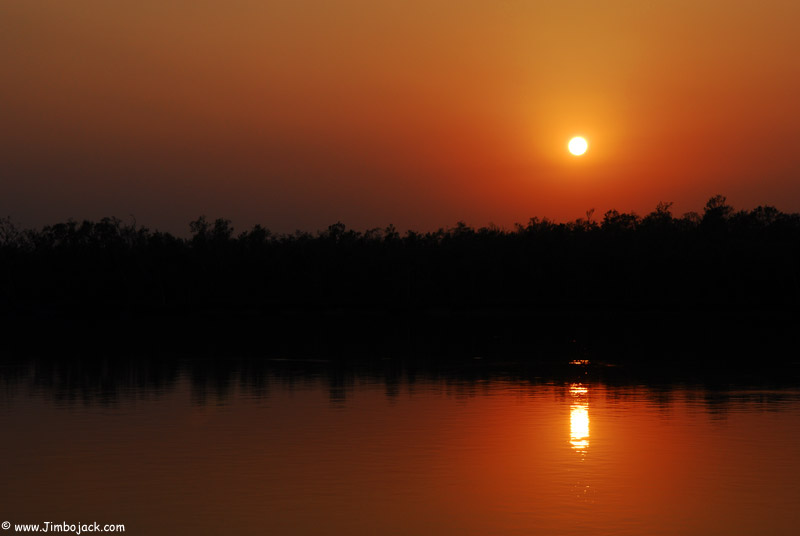
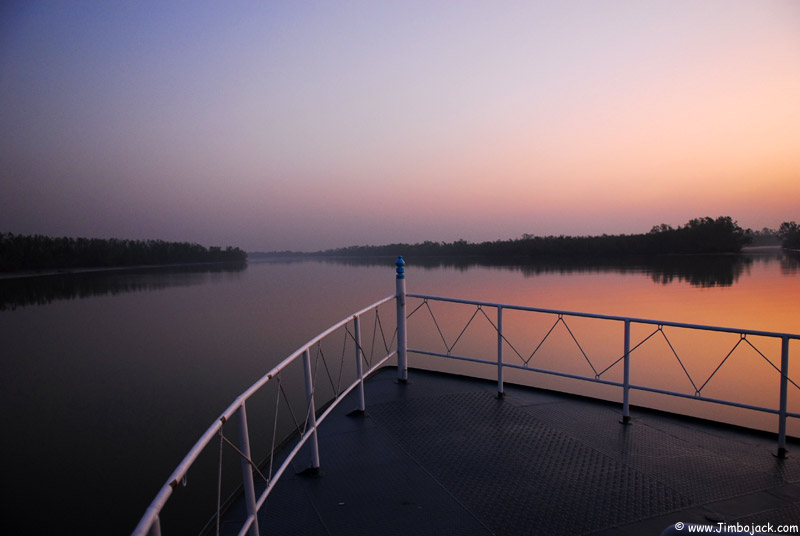
The dolphin project is working on counting and tracking the species of dolphins found in the sunderbans (Irrawaddy, Ganges river dolphin and the Indo-Pacific hump-backed dolphin). Their boat's engine broke down and they waited a few days for our boat to come by with much needed parts, food and fresh water. They docked with us for the night and set off in the morning going further into the Bay of Bengal.
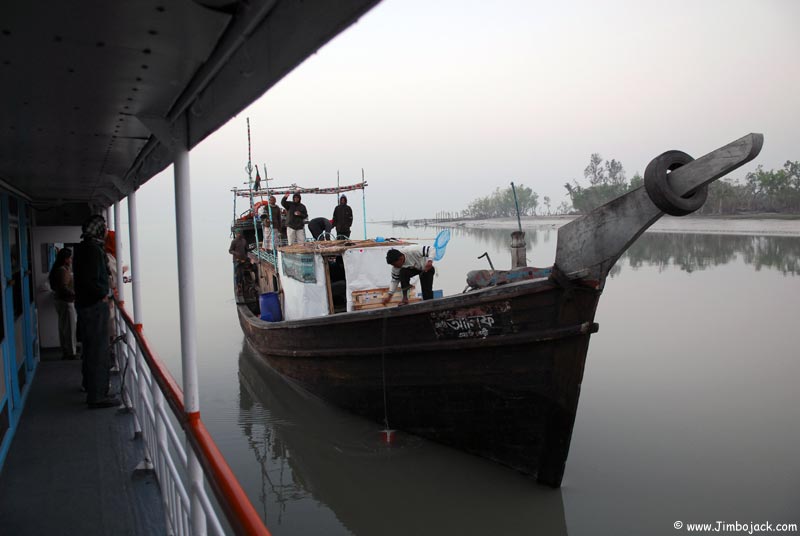
Area of the forest damaged by cyclone Sidr. The cyclone hit on November 15th, killing probably around 10,000 people and leaving millions without shelter. The pictures here were taken around the middle of January, by this time the forest had started to regenerate. It started to do so much faster then most experts predicted, although it will still take years for the damage to be repaired.
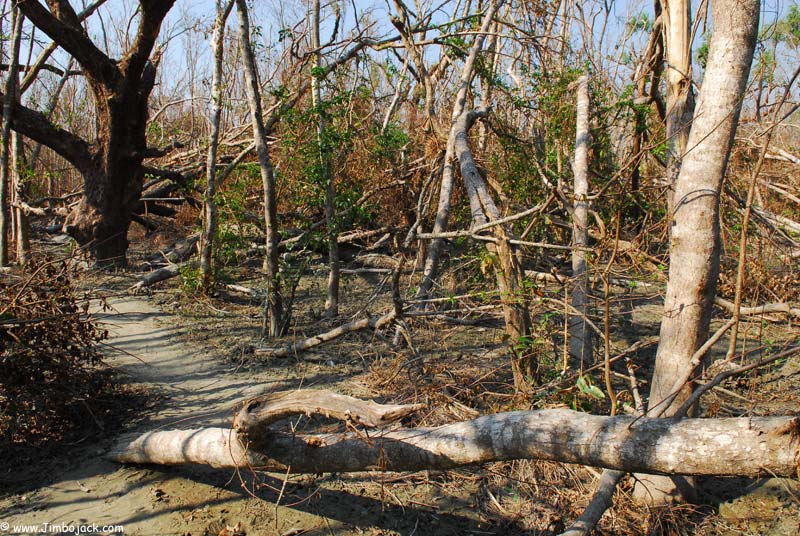
This is a beach on the Bay of Bengal. If you look at the trees in the distance, you can see a brown line about 3/4 of the way up the tree, with the remaining 1/4 being green. The brown part of the trees shows how high the water level was at the time of the cyclone.

Small Creek
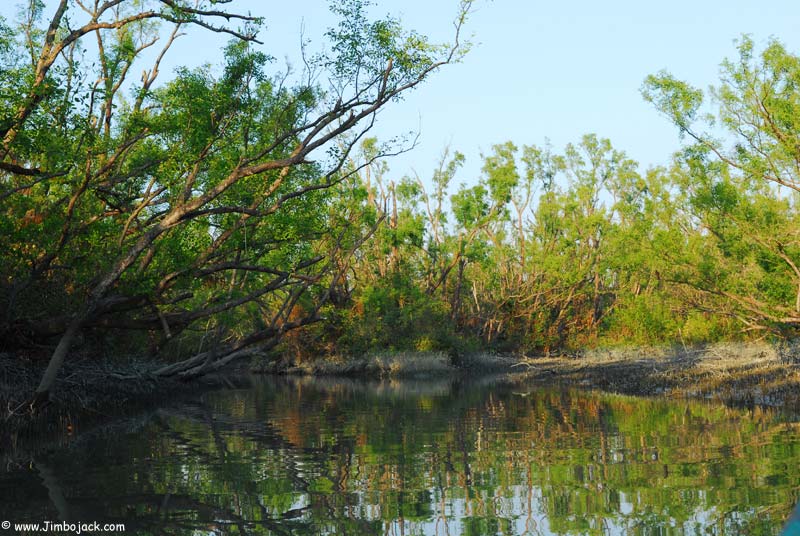
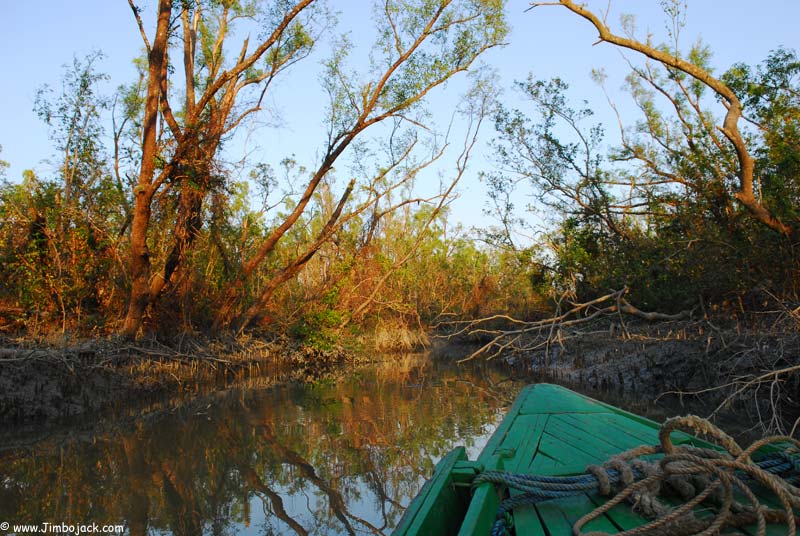
This skull was impaled by the fisherman on a stick on a beach. After asking him about how it came to be there, he said he just found it one morning on the beach after the cyclone and placed it there. What probably happened was that the cyclone washed out some graves out to the sea, and parts of the bodies were brought back by the returning tide. But it could also be a skull of a person killed during the cyclone, the remains washing up on the shore after being devoured by animals.

This is the fisherman
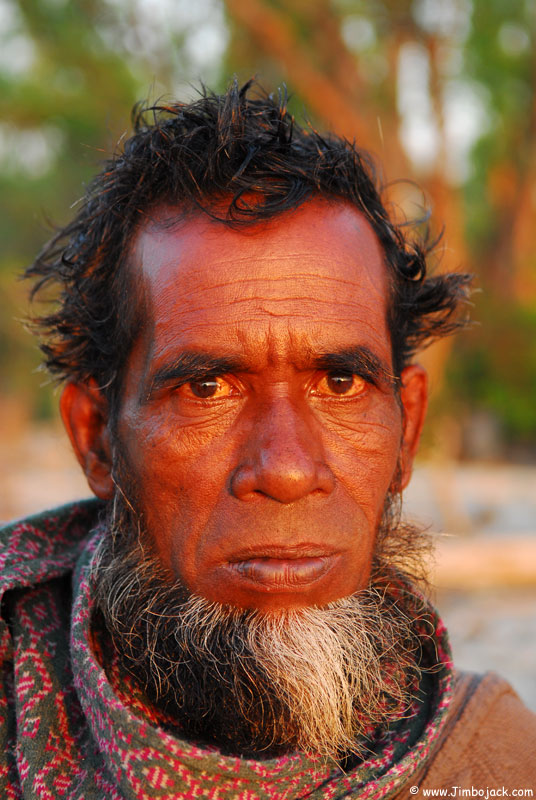
Another Sunset

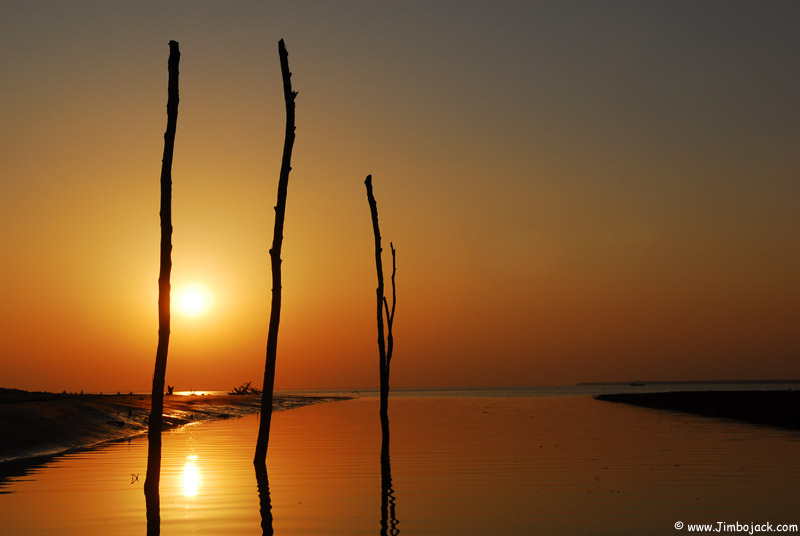
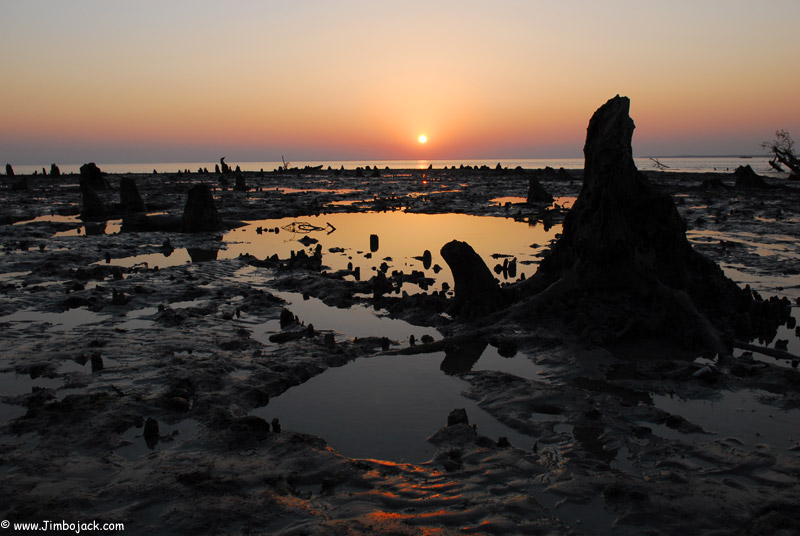
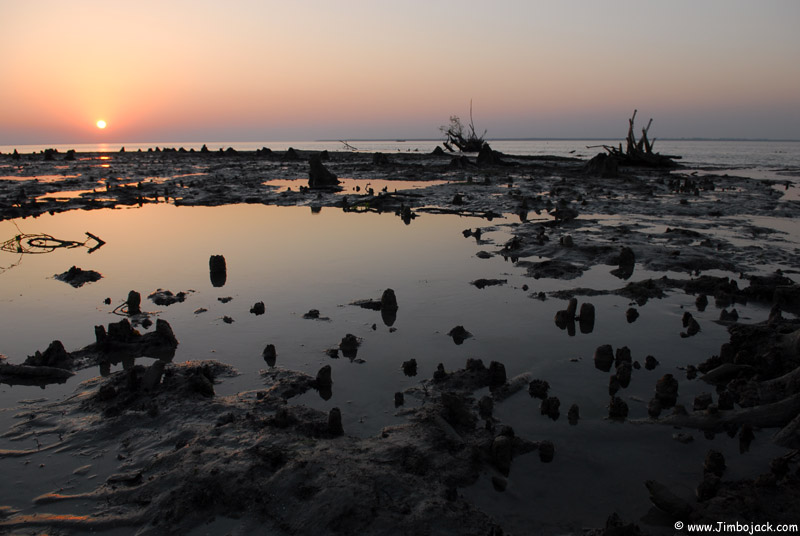
Mangrove roots in the early morning
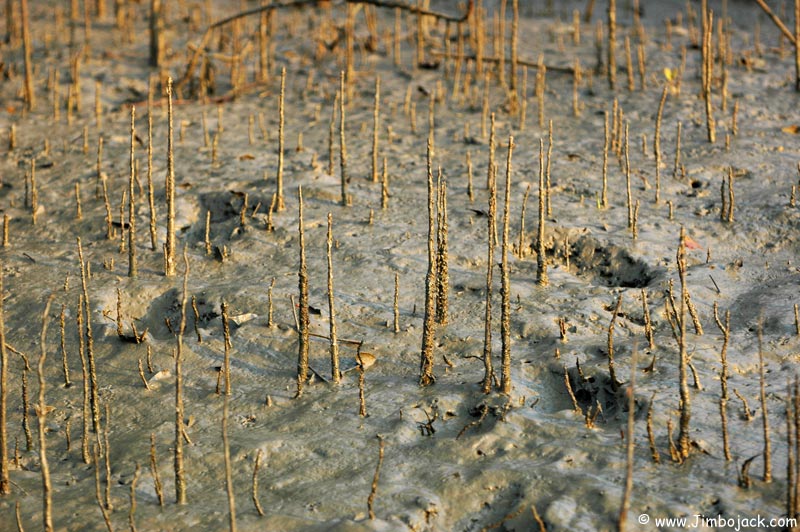
Small boat next to a forest station. The small pier on the right was completely destroyed by the cyclone
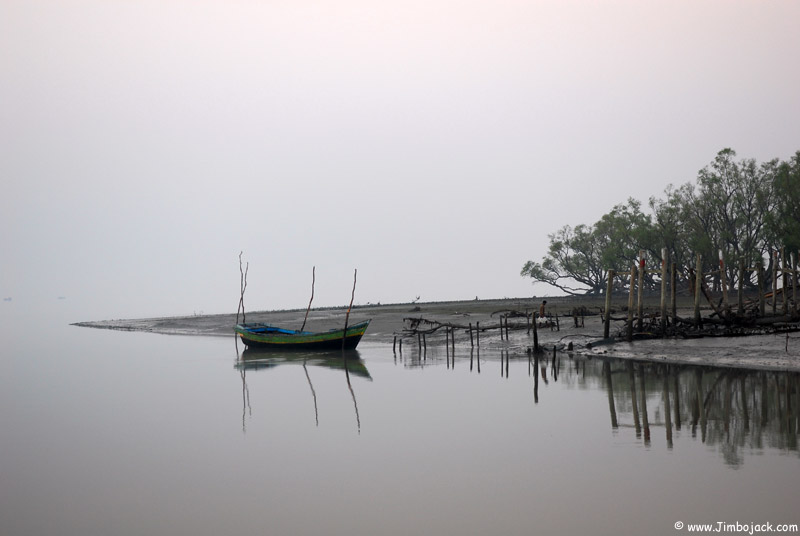
This is one of the two forest guards that accompanied us for protection. The guns are loaded with blanks in order to scare the tigers away in the event of an encounter, but they also carry live bullets just in case. In areas of high tiger activity, you were not allowed to walk anywhere without a guard.
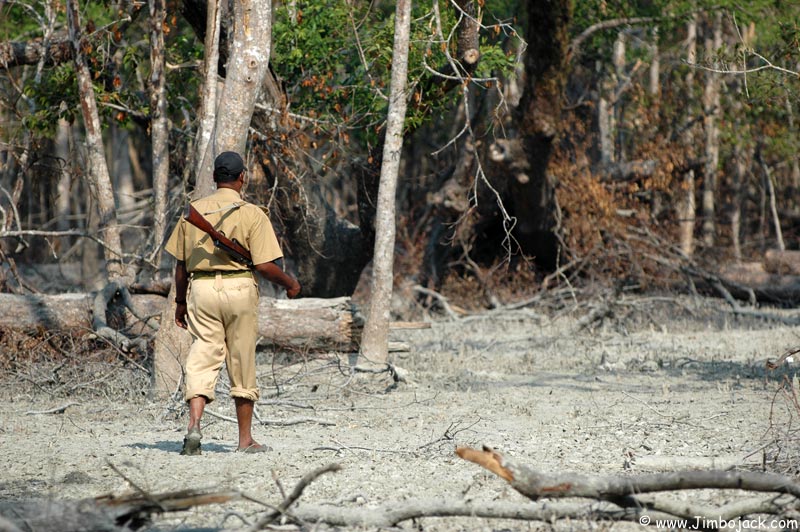
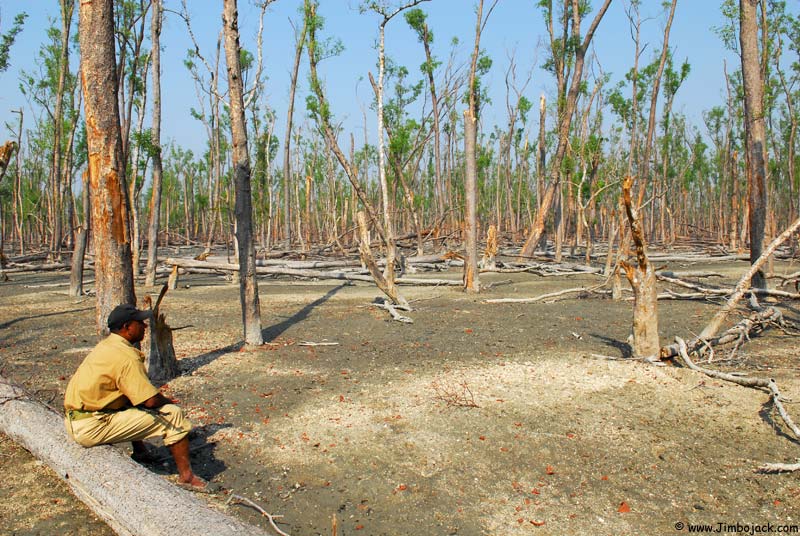
Morning mist
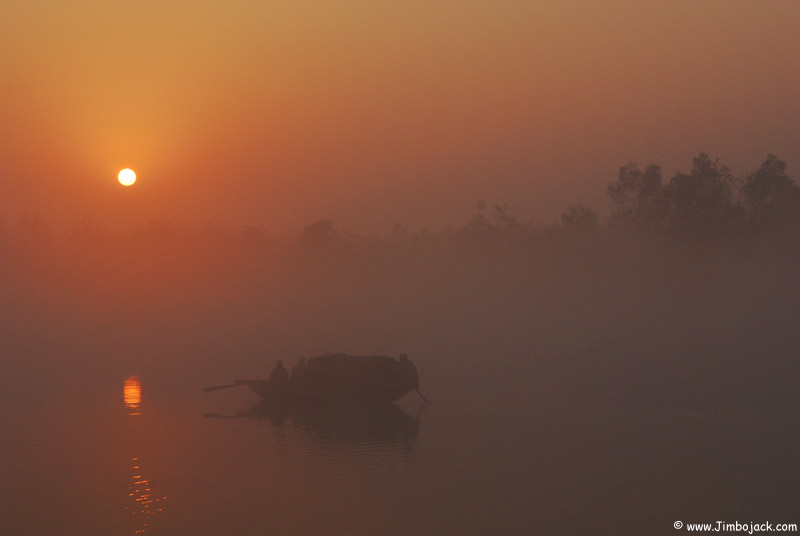
Official Bangladeshi government report about the number of people killed by the Bengal Tigers in the Sundarbans. The actual figure however is a lot higher, estimated at around 200-250 tiger attacks per year (over 90% are fatal). Keep in mind that these figures and estimates are only for the Bangladeshi side, the Indians are very secretive about what is happening on their side of the border and do not release much data. Access there is extremely difficult, many scientist are refused entry, and the data that is available is not trustworthy. It is interesting to note that as you go west towards the Indian side the tigers get more aggressive. One of the theories that explains this states that the salinity of the water increases towards the west which irritates the tigers making them more aggressive. This theory which had no scientific basis caused the Indian government to dig fresh water tanks for the tigers (in an area where people don't have access to fresh water). This has had absolutely no effect on the tigers.
It's very difficult to get a real idea about tiger attacks. There have been claims by fishermen that tigers jumped into their boats and attacked them while they were sleeping. No such cases have been proven, and it is in fact almost impossible to prove that they are true. Almost all of the fishermen go on land to gather firewood (which is illegal since this is a protected forest), and that is where most of them are attacked especially since they are usually walking through a lot of undergrowth which is where the tigers spend a lot of their time. Upon being questioned by a forest official, they do not want to admit that they were on land illegally gathering firewood so they make up stories of tigers jumping into their boats. Officially everyone who enters the Sunderbans has to register with the forest officials and get a permit. Many fishermen, poachers, wood gatherers do not register and are ignored by the Bangladeshi government. If caught, they usually pay a bribe to whatever official catches them (Bangladesh is the most corrupt country in the world according to Transparency International)
The people that do suffer greatly are the honey collectors. Every season, men set out through the forest to search for nests of the wild honeybees. They spend hours walking around until they find these nests, smoke the bees out and collect the honey which they bottle and sell supplementing their income. That is one of the most dangerous jobs in the Sunderbans, with many of the being killed every season. A 3-part BBC documentary called "Ganges" shows the Sunderbans and the honey hunt (which happens every March).
Note about the government compensation: a persons life is only valued at 20,000 taka, which is equal to around $291, while cattle is a 1/4 of that ($72.88) and a goat is a tenth ($29.1).
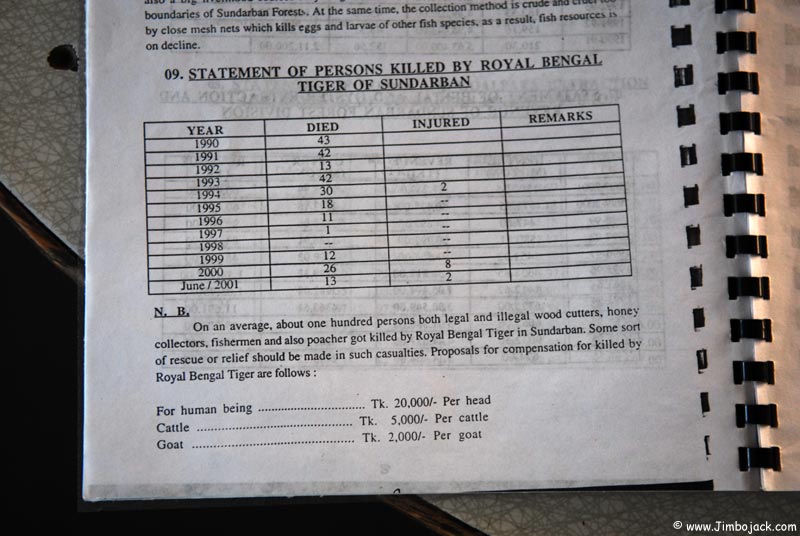
A Calvin & Hobbes cartoon taped to the inside of a toilet door on the ship

Time for some wildlife
Oriental Magpie
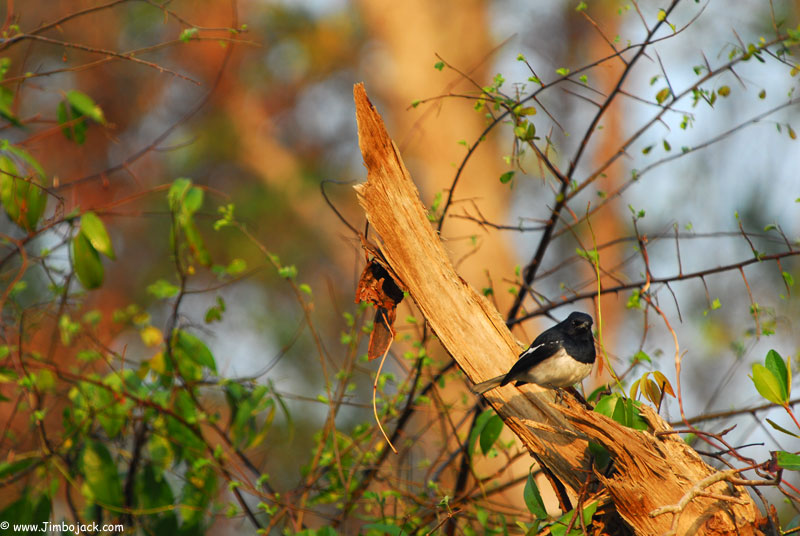
Indian Pond Heron
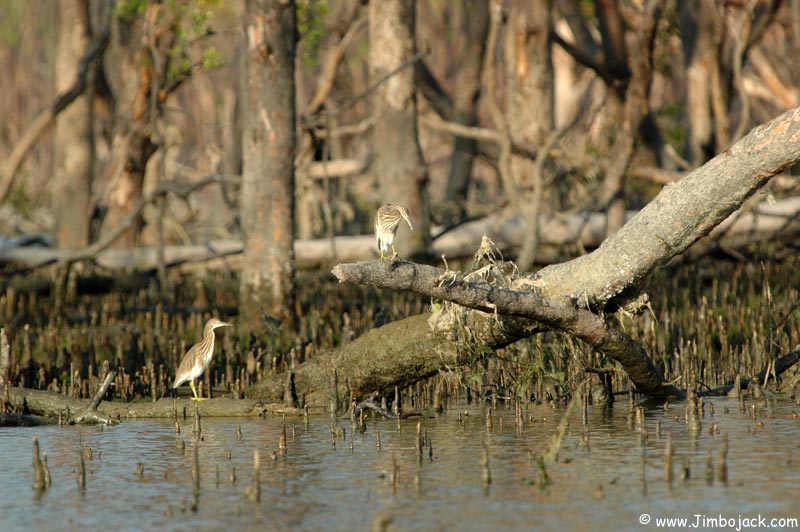
Common Kingfisher
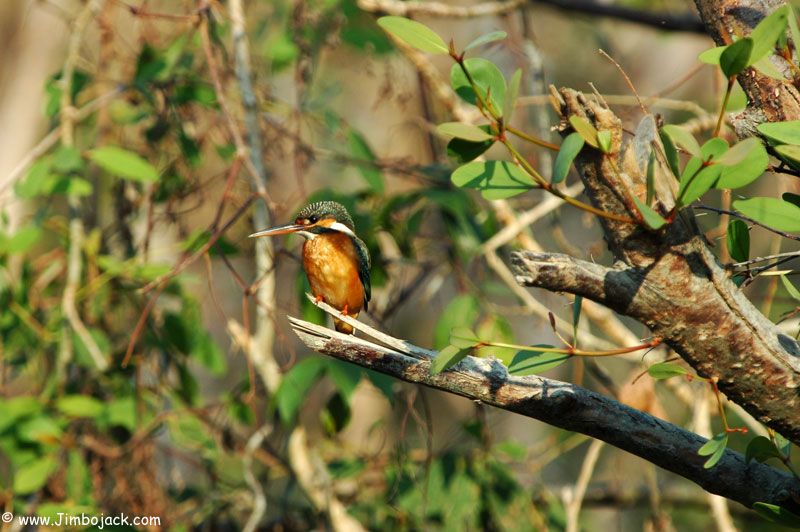
Black-capped Kingfisher
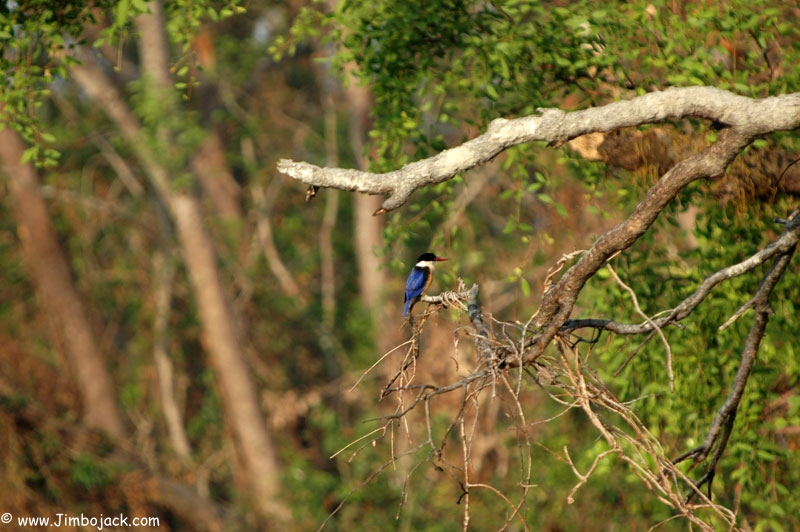
Brown-winged Kingfisher
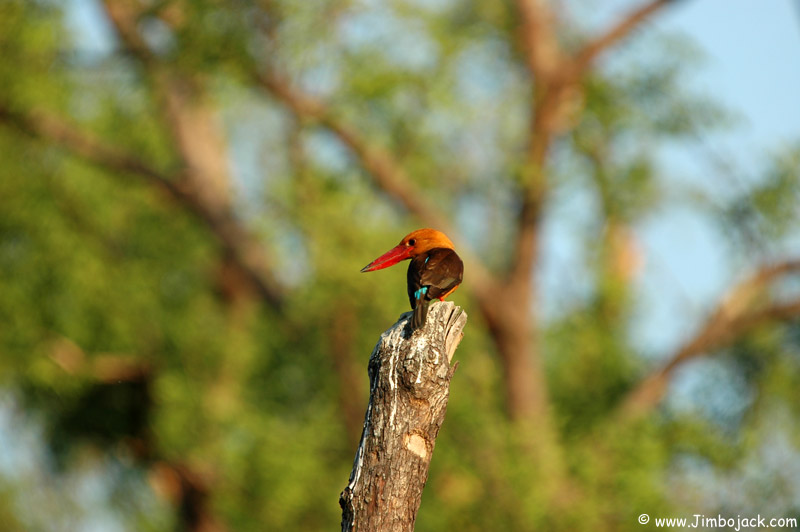
Crested Serpent Eagle
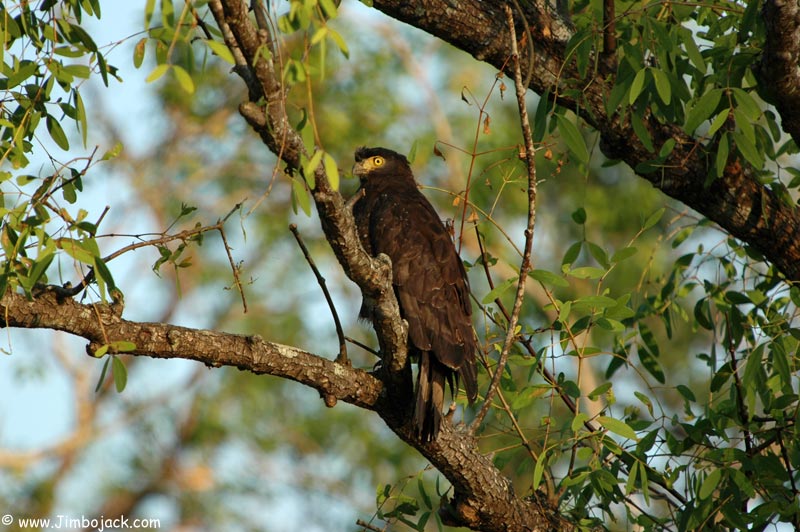
Grey-headed Fish Eagle
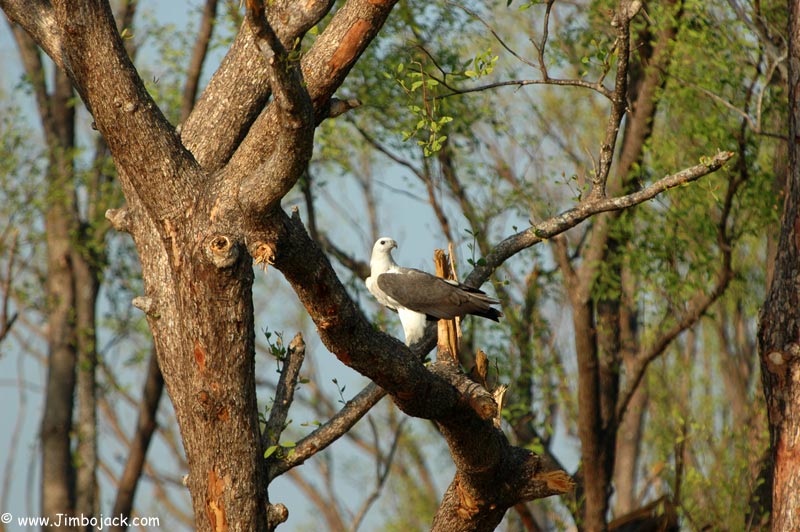
Brahminy Kite

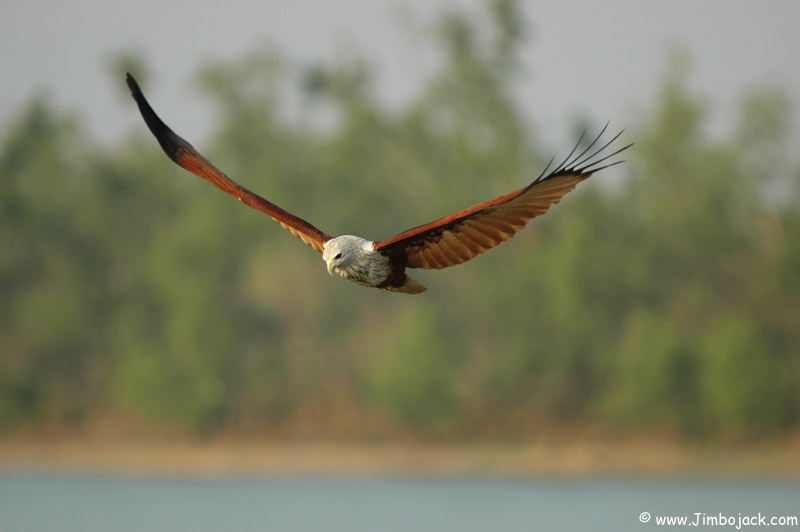
Green Vine Snake
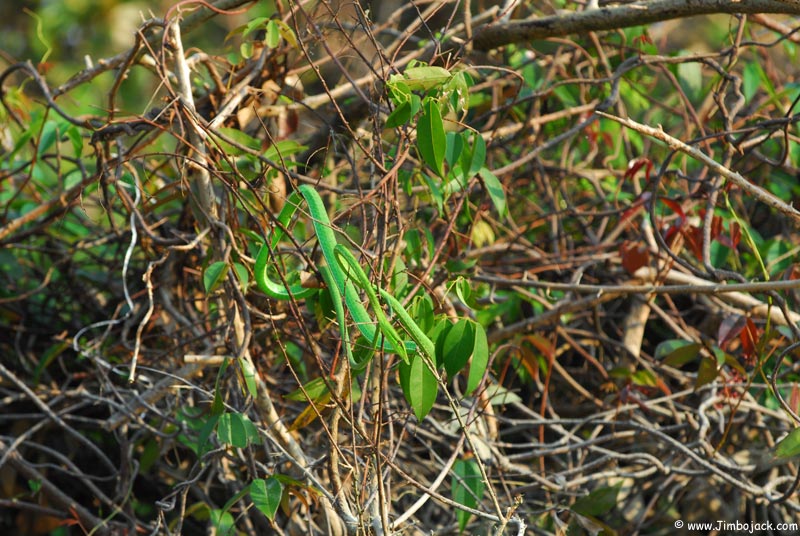
Grey Vine Snake
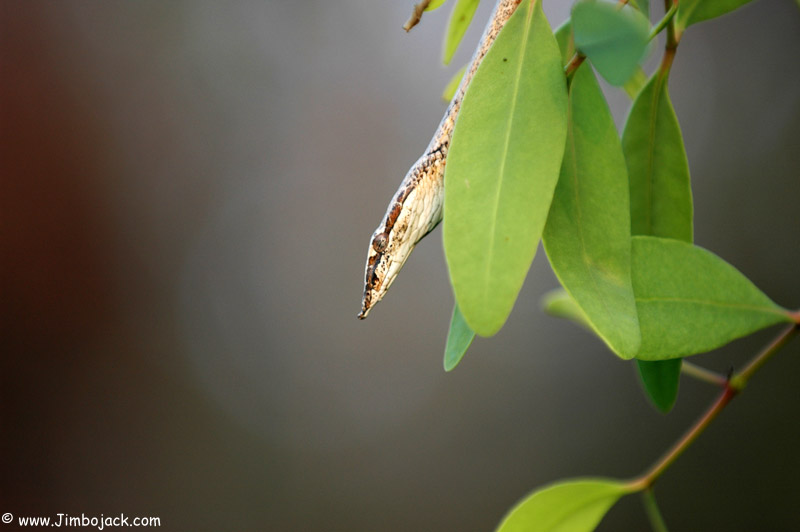
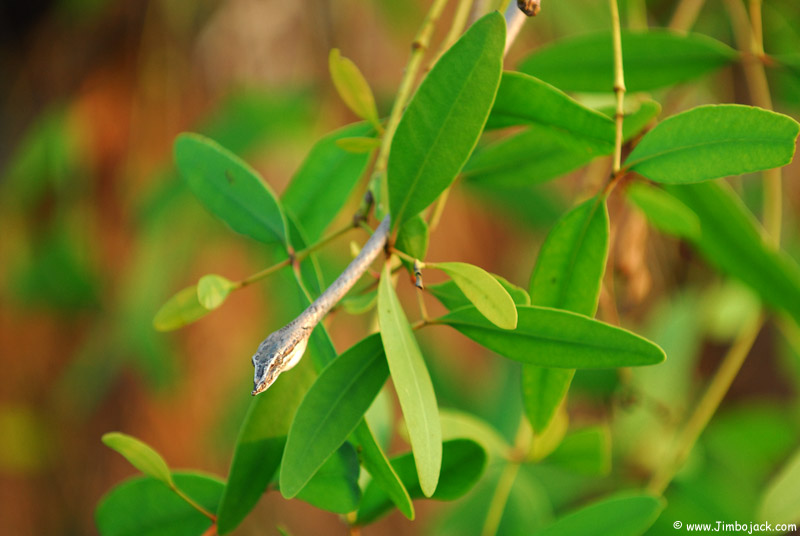
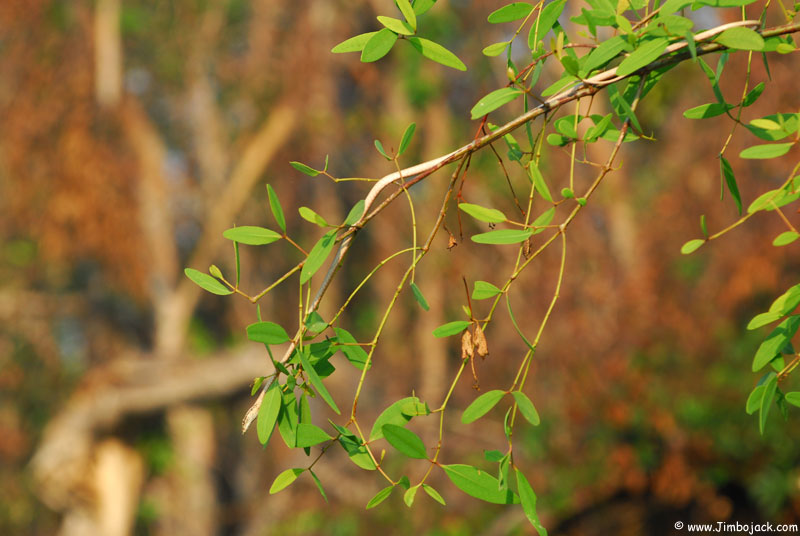
Water Monitor nest, you can see part of the tail sticking out

Royal Bengal Tiger tracks
Unfortunately I was not able to see any tigers in person. The tracks of a tiger crossing a creek in the photo below were only a couple of hours old at the time we came across them in the early morning
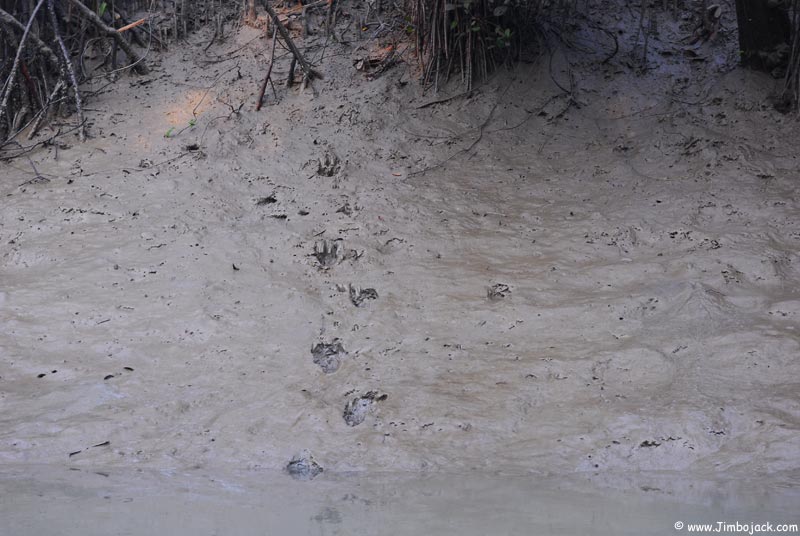
Tiger scratches in a tree, they are almost 2 meters (5-6 feet) off the ground

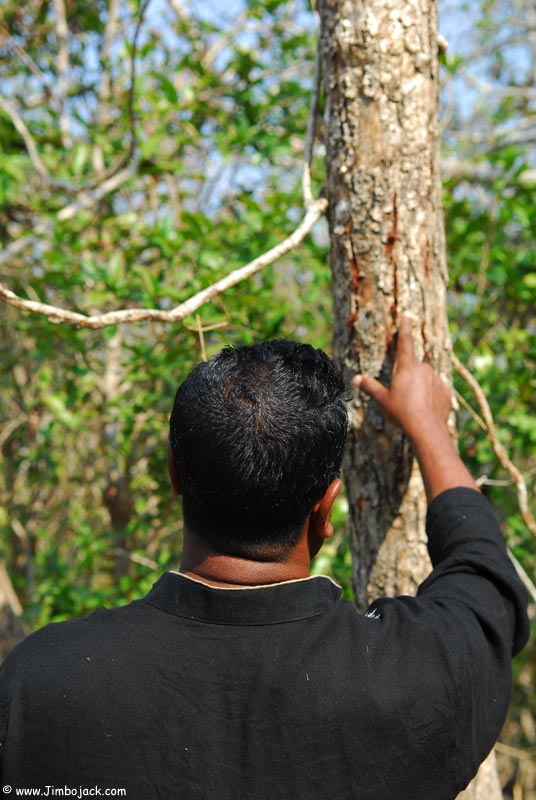
Oriental Small-clawed Otters
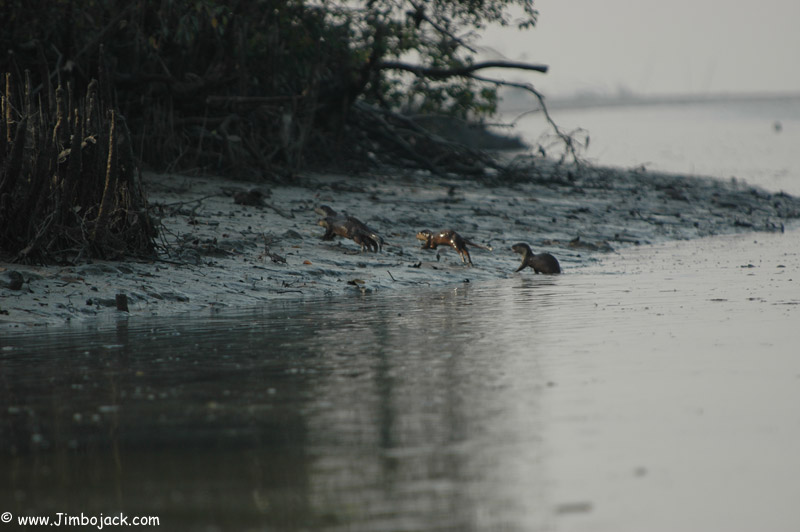
Chital, Spotted Deer
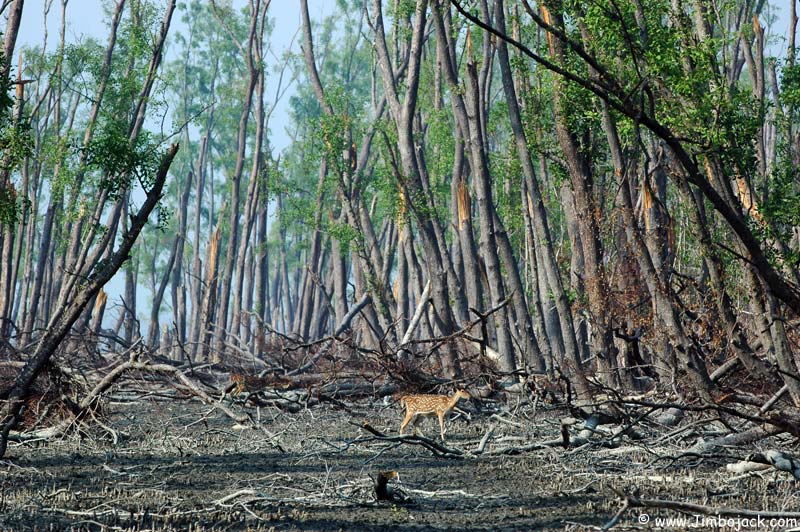
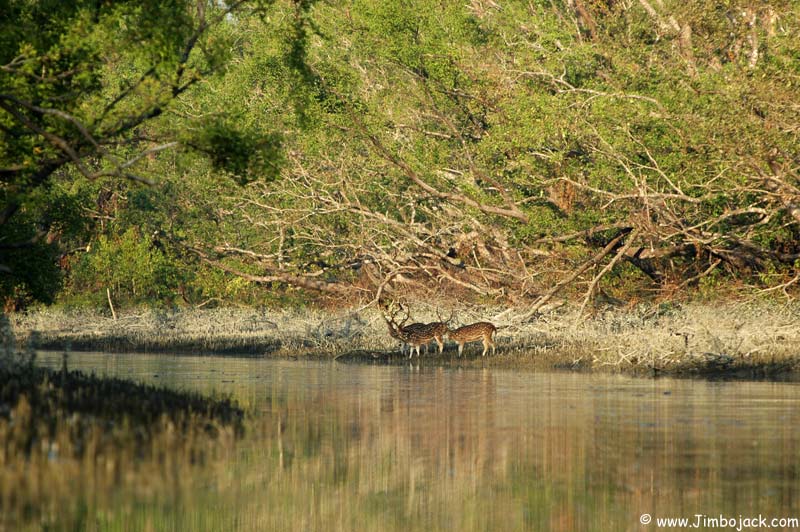
Fiddler Crabs
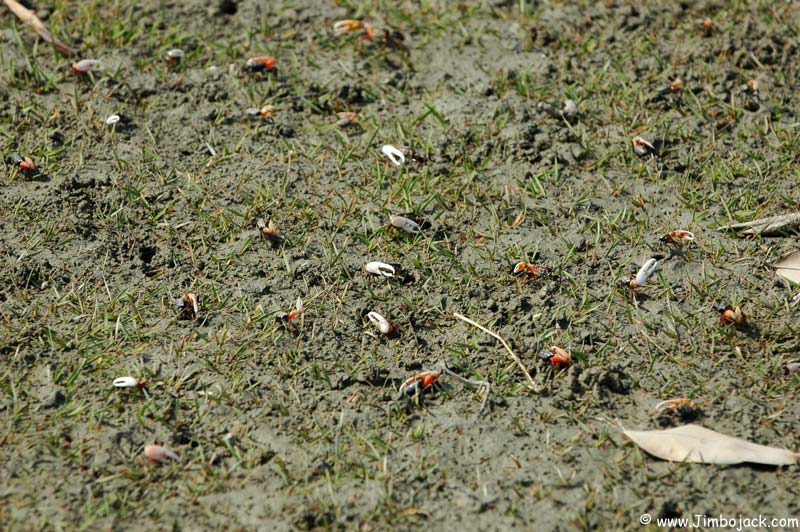

Mudskippers
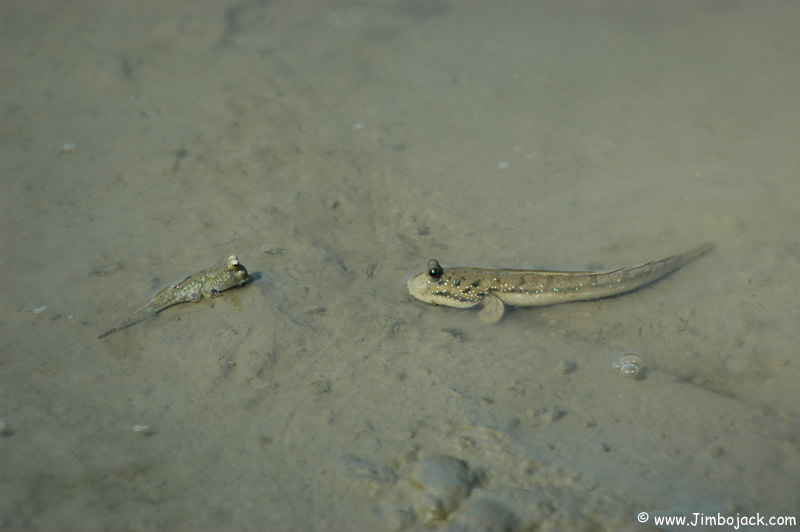
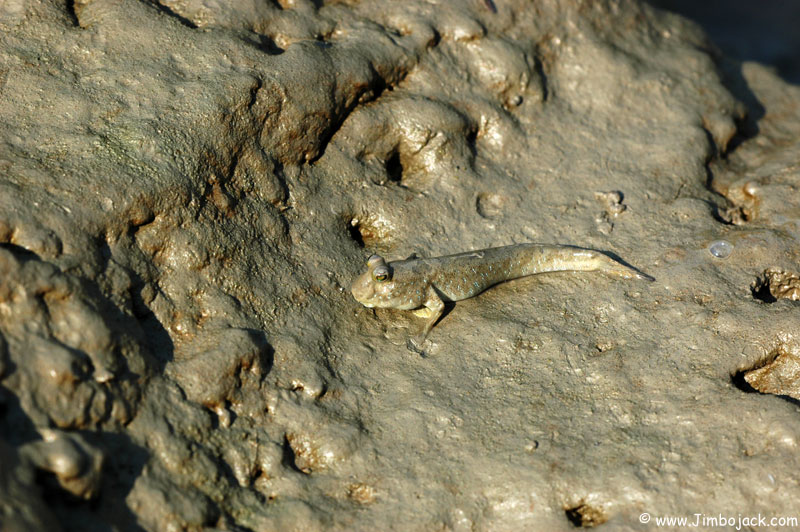
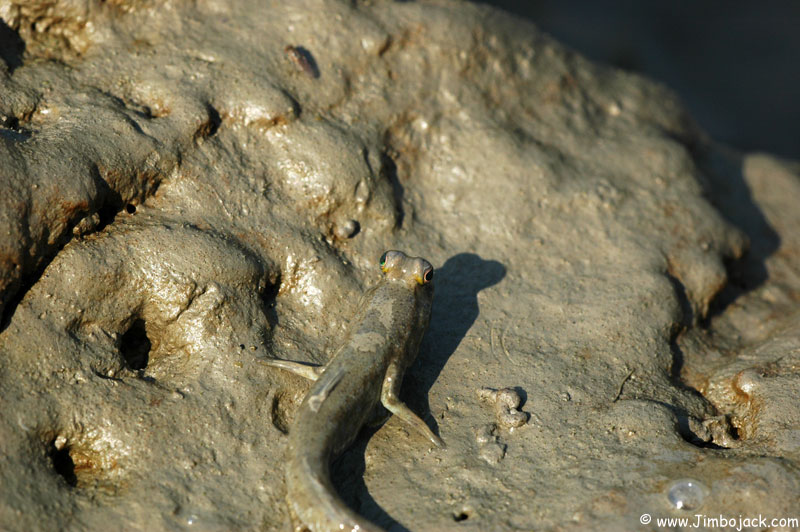
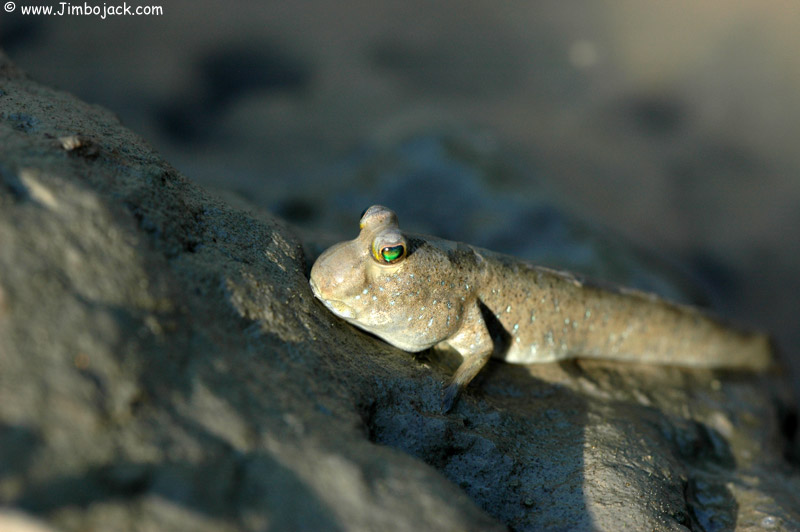
On a technical note the longest lens I have is a 70-200vr + 1.7tc, all the birds were shot with this lens. I'm seriously thinking about startng to save for something longer like a 200-400 or a 300 2.8 + tc
I hope you enjoyed the photos and the brief description.
I plan on writing much more about the Sunderbans sometime in the future, but for now I want to go through and edit photos from other parts of my trip. I'll be posting a series from the Chittagong ship breaking yards in a few days.
If you would like to see more of the Sunderbans (I have around 150 photos online), please visit my page for this trip located at: http://jimbojack.com/South_Asia.htm
The Sundarbans is the largest tidal mangrove forest in the world. It is located in the south of Bangladesh and in the Indian state of West Bengal. It is located on the delta of the Ganges, Brahmaputra and Meghna rivers, which flow into the Bay of Bengal. The larger part of the forest is in Bangladesh (approximately 62%), while the rest is in West Bengal. Both parts are listed by UNESCO as world heritage sites, Sundarbans National Park (India) and Sunderbans (Bangladesh).
The literal meaning of the word Sundarban is "beautiful forest" or "beautiful jungle" in the Bangla (Bengali) language. It is also thought that it could have been derived from Sundari, a tree that is abundant in the forest.
The forest is home to large amounts of wildlife, including 270 bird species, 120 species of commercially important fish, 42 species of mammals, including approximately 500 royal Bengal tigers (one of the largest single populations in the world) and 30,000 chitals (spotted deer).
While there are no permanent settlements in the Sunderbans forest reserve (they are illegal), approximately 500,000 people live in towns, villages and small settlements along the northern part of the forest (just on the Bangladeshi side). Many are fishermen, who are sometimes allowed into the Sunderbans or the Bay of Bengal for a few days at a time to catch fish.
The photo below shows my approximate route during the 4 days I spent on a boat in the Sunderbans. At the top of the image, it reads "To: Mongla & Khulna" Note that the left 1/3 of the image is actually India, while the right 2/3 is Bangladesh, this photo does not show the border

The following photos show life on the river and the settlements on the riverbanks. They are from an inhabited area around the Sunderbans, going south from Khulna, past Mongla and into the forest reserve.






From this point on, photos are from the forest reserve where there are no settlements. It is completely wild
Sunrise over the river


The dolphin project is working on counting and tracking the species of dolphins found in the sunderbans (Irrawaddy, Ganges river dolphin and the Indo-Pacific hump-backed dolphin). Their boat's engine broke down and they waited a few days for our boat to come by with much needed parts, food and fresh water. They docked with us for the night and set off in the morning going further into the Bay of Bengal.

Area of the forest damaged by cyclone Sidr. The cyclone hit on November 15th, killing probably around 10,000 people and leaving millions without shelter. The pictures here were taken around the middle of January, by this time the forest had started to regenerate. It started to do so much faster then most experts predicted, although it will still take years for the damage to be repaired.

This is a beach on the Bay of Bengal. If you look at the trees in the distance, you can see a brown line about 3/4 of the way up the tree, with the remaining 1/4 being green. The brown part of the trees shows how high the water level was at the time of the cyclone.

Small Creek


This skull was impaled by the fisherman on a stick on a beach. After asking him about how it came to be there, he said he just found it one morning on the beach after the cyclone and placed it there. What probably happened was that the cyclone washed out some graves out to the sea, and parts of the bodies were brought back by the returning tide. But it could also be a skull of a person killed during the cyclone, the remains washing up on the shore after being devoured by animals.

This is the fisherman

Another Sunset




Mangrove roots in the early morning

Small boat next to a forest station. The small pier on the right was completely destroyed by the cyclone

This is one of the two forest guards that accompanied us for protection. The guns are loaded with blanks in order to scare the tigers away in the event of an encounter, but they also carry live bullets just in case. In areas of high tiger activity, you were not allowed to walk anywhere without a guard.


Morning mist

Official Bangladeshi government report about the number of people killed by the Bengal Tigers in the Sundarbans. The actual figure however is a lot higher, estimated at around 200-250 tiger attacks per year (over 90% are fatal). Keep in mind that these figures and estimates are only for the Bangladeshi side, the Indians are very secretive about what is happening on their side of the border and do not release much data. Access there is extremely difficult, many scientist are refused entry, and the data that is available is not trustworthy. It is interesting to note that as you go west towards the Indian side the tigers get more aggressive. One of the theories that explains this states that the salinity of the water increases towards the west which irritates the tigers making them more aggressive. This theory which had no scientific basis caused the Indian government to dig fresh water tanks for the tigers (in an area where people don't have access to fresh water). This has had absolutely no effect on the tigers.
It's very difficult to get a real idea about tiger attacks. There have been claims by fishermen that tigers jumped into their boats and attacked them while they were sleeping. No such cases have been proven, and it is in fact almost impossible to prove that they are true. Almost all of the fishermen go on land to gather firewood (which is illegal since this is a protected forest), and that is where most of them are attacked especially since they are usually walking through a lot of undergrowth which is where the tigers spend a lot of their time. Upon being questioned by a forest official, they do not want to admit that they were on land illegally gathering firewood so they make up stories of tigers jumping into their boats. Officially everyone who enters the Sunderbans has to register with the forest officials and get a permit. Many fishermen, poachers, wood gatherers do not register and are ignored by the Bangladeshi government. If caught, they usually pay a bribe to whatever official catches them (Bangladesh is the most corrupt country in the world according to Transparency International)
The people that do suffer greatly are the honey collectors. Every season, men set out through the forest to search for nests of the wild honeybees. They spend hours walking around until they find these nests, smoke the bees out and collect the honey which they bottle and sell supplementing their income. That is one of the most dangerous jobs in the Sunderbans, with many of the being killed every season. A 3-part BBC documentary called "Ganges" shows the Sunderbans and the honey hunt (which happens every March).
Note about the government compensation: a persons life is only valued at 20,000 taka, which is equal to around $291, while cattle is a 1/4 of that ($72.88) and a goat is a tenth ($29.1).

A Calvin & Hobbes cartoon taped to the inside of a toilet door on the ship

Time for some wildlife
Oriental Magpie

Indian Pond Heron

Common Kingfisher

Black-capped Kingfisher

Brown-winged Kingfisher

Crested Serpent Eagle

Grey-headed Fish Eagle

Brahminy Kite


Green Vine Snake

Grey Vine Snake



Water Monitor nest, you can see part of the tail sticking out

Royal Bengal Tiger tracks
Unfortunately I was not able to see any tigers in person. The tracks of a tiger crossing a creek in the photo below were only a couple of hours old at the time we came across them in the early morning

Tiger scratches in a tree, they are almost 2 meters (5-6 feet) off the ground


Oriental Small-clawed Otters

Chital, Spotted Deer


Fiddler Crabs


Mudskippers




On a technical note the longest lens I have is a 70-200vr + 1.7tc, all the birds were shot with this lens. I'm seriously thinking about startng to save for something longer like a 200-400 or a 300 2.8 + tc
I hope you enjoyed the photos and the brief description.
I plan on writing much more about the Sunderbans sometime in the future, but for now I want to go through and edit photos from other parts of my trip. I'll be posting a series from the Chittagong ship breaking yards in a few days.
If you would like to see more of the Sunderbans (I have around 150 photos online), please visit my page for this trip located at: http://jimbojack.com/South_Asia.htm
Phillip
Just back from Europe, Eastern Turkey, Iraq and Iran, new photos coming soon!
Over 100 Countries, thousands of pictures, one Website (being redesigned at the moment)
www.Jimbojack.com
Just back from Europe, Eastern Turkey, Iraq and Iran, new photos coming soon!
Over 100 Countries, thousands of pictures, one Website (being redesigned at the moment)
www.Jimbojack.com
0
Comments
My Gallery
www.morffed.com
excellent job.. can you help us with some of your pictures.. i have briefed you in the mail..
Thanks for sharing.
Educate yourself like you'll live forever and live like you'll die tomorrow.
Ed